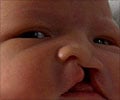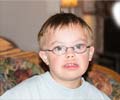An alternate pathway the leads to palate development may have been identified by experts at the University Of Southern California School Of Dentistry.
Yang Chai, a professor and director of the Center for Craniofacial Molecular Biology, has revealed that his team made this advance while scrutinizing the transforming growth factor beta (TGF-ß) family's role in palate formation problems."For instance, we've learned that when someone has a haploid insufficiency and is missing one copy of the TGF-ß gene, he or she is more vulnerable to environmental insults that can cause cleft palate, such as drugs, smoking and alcohol," Chai says.
Highlighting the fact that Smad4 is one of the main signalling molecules used in the TGF-ß pathway during palate and tooth development, the researcher said that his team wanted to determine whether blocking Smad4 could spark palate malformation in experimental mouse models.
"We found that if we blocked TGF-ß or the receptors, a cleft palate develops. But when Smad4 was blocked, normal palate epithelium still covered the palatal shelf," he says.
He and his colleagues found that a stress-response protein p38 MAPK (mitogen activated protein kinase) could take Smad4's place in the pathway, and signal DNA expression to form the palate.
Chai said that p38 MAPK, which is generally activated by environmental insults like ultraviolet radiation on skin cells, appeared to act as a "spare tire" when Smad4 function was compromised.
Advertisement
The researchers concede that p38 MAPK is not a perfect replacement for Smad4 during oral development, for teeth only partially formed when the latter was non-functional.
Advertisement
Chai says that further study may have big implications not only on congenital oral birth defects like cleft palate, but also on malformations and diseases in tissues throughout the body.
He hopes that patients may one day be able to take advantage of new genetic counselling, and treatment methods stemming from this information.
"This information is useful not just for palate and teeth but also for cancer and cell biology in general. Ultimately, we have to be translational in order to make ourselves useful to patients," he says.
The study has been published in the journal Development Cell.
Source-ANI
RAS/S











